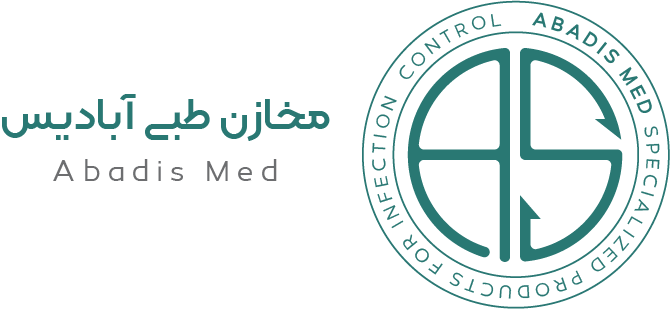A Case Study of Sustainable Innovation in Producing Disposable Suction Bags as a Strategy for Reducing Water Consumption and Hospital Waste
This paper was presented at the 3rd National Conference and Exhibition on Environmental Challenges: The Role of Industry, Mining, and Society in Expanding Green Governance.
Abstract
Purpose and Background:
With growing global concerns about pollution caused by hospital waste and the high water consumption involved in sterilizing medical equipment, the need to move toward green governance in the healthcare sector has become increasingly critical. Knowledge-based industries can play an essential role in reducing environmental impacts by offering technological innovations. This study examines the role of sustainable innovation in producing disposable suction bags as an example of green-industry technologies in Iran.
Methods:
This descriptive–analytical study is based on empirical data collected from the use of disposable suction bag technology in more than 500 hospitals across the country. Key indicators such as water savings, reductions in infectious waste, decreased energy consumption, and improved workplace hygiene were analyzed. Comparative analysis was conducted between traditional suction-canister washing systems and modern disposable systems.
Findings:
The results indicate that the adoption of disposable suction bags significantly reduces water consumption by up to 10 million liters annually across the national hospital network. The technology also decreases infectious waste volume, reduces the risk of cross-contamination, lowers energy usage, and cuts operational costs related to washing and labor. The findings show strong alignment with several UN Sustainable Development Goals (SDGs), including Goals 3, 6, 8, 9, and 12.
Conclusion:
The experience of the Abadis Medical knowledge-based company demonstrates that the development and branding of environmentally oriented medical technologies can serve as a successful model of green industry in Iran. Promoting such innovations not only reduces environmental impacts in the healthcare sector but also enhances the competitiveness of knowledge-based industries in domestic and international markets.
Keywords:
Green governance, sustainable development, green industry, disposable suction bag, hospital waste, knowledge-based industries
1. Introduction
In recent decades, population growth and rising healthcare demands have led to a substantial increase in hospital waste, which—if mismanaged—poses serious risks of biological and chemical contamination [1]. Wastewater generated from washing suction canisters and other fluid-collection equipment is considered one of the major sources of secondary contamination in medical centers [2]. The World Health Organization (WHO) reports that approximately 15% of all hospital waste is infectious or hazardous, much of which ends up in the environment due to insufficient disinfection and waste-treatment infrastructure in many countries [3].
Traditional suction canister washing systems not only consume large amounts of water but also expose medical staff to contaminated fluids and increase the spread of pathogens. According to Gordon and Schiller (2023), the use of disposable systems for collecting medical fluids can reduce contamination in effluents by up to 70%, while significantly lowering energy and water consumption [4].
In response to these challenges, the shift toward Green Governance within the healthcare sector—and the adoption of knowledge-based innovations—has become essential. Green governance emphasizes cross-sector cooperation, transparency, and synergy between government, industry, and society [5]. Knowledge-based industries can contribute substantially to sustainability by creating eco-friendly medical technologies [6].
One successful domestic example is Abadis Medical, a knowledge-based company that has developed disposable suction bag systems. These systems eliminate the need for washing and disinfecting traditional suction canisters, resulting in an estimated annual saving of 10 million liters of water, reduced energy and chemical usage, and a major reduction in infectious waste [7].
According to the company’s official reports, the environmental benefits of this technology align strongly with several UN Sustainable Development Goals, especially SDG3, SDG6, SDG9, and SDG12 [8].
This study examines the Abadis model as a case study for the role of knowledge-based industries in achieving green governance within Iran’s healthcare system.
2. Methodology
This research was conducted using a descriptive–analytical method and a case study approach to evaluate the environmental impacts of disposable suction bags compared to traditional suction-canister washing systems.
2.1. Data Sources
Two main data sources were used:
A. Empirical Data from Abadis Medical
Collected between 2020 and 2024 (1399–1403) across 38 hospitals in Tehran, Mashhad, Shiraz, Isfahan, and Tabriz.
The monitored indicators included:
-
Water consumption
-
Electricity consumption
-
Disinfectant usage
-
Infectious waste volume
-
Reported staff exposure to contaminated fluids
B. Comparative International Studies
Including Sharafi (2023) and Gordon & Schiller (2023), which evaluated the environmental impacts of disposable suction systems in hospitals worldwide [1], [4].
Combining domestic and international datasets enabled meaningful cross-validation.
2.2. Tools and Analysis Model
To evaluate environmental impacts, we used the Life Cycle Assessment (LCA) model based on ISO 14040 [9].
Data were normalized and analyzed using Excel 2021 and SPSS v.26.
Mean reductions and percentage improvements were calculated and displayed numerically and graphically.
2.3. Evaluation Indicators
| Indicator | Unit | Purpose |
|---|---|---|
| Water savings | Liters/year | Assessment of water conservation |
| Electricity consumption | kWh/year | Evaluation of reduced energy loads |
| Waste volume | kg/year per bed | Comparison of infectious waste |
| Staff exposure | Incidents/year | Assessment of occupational safety |
2.4. Validation
Data from Iranian hospitals were validated by comparison with international studies.
For example:
-
Water-saving values: 90% (Iran) vs. 85–95% (global studies)
-
Energy reduction: 65% (Iran) vs. 60–70% (global studies)
Sustainability alignment with SDG3, SDG6, SDG9, and SDG12 was similarly confirmed [10], [13].
3. Findings
Using disposable suction bags produced major environmental improvements across the 38 studied hospitals.
The most significant changes were found in water consumption, energy usage, infectious waste, and occupational exposure.
3.1. Quantitative Results
Table 2. Comparison of Key Environmental Indicators
| Indicator | Unit | Traditional System | Disposable System | Notes |
|---|---|---|---|---|
| Water consumption | Liters/year | 10,000,000 | 800,000 | Washing eliminated |
| Energy consumption | kWh/year | 45,000 | 15,000 | No washing/drying machines |
| Infectious waste | kg/year per bed | 100 | 25 | Closed system prevents leakage |
| Staff exposure incidents | Incidents/year | 30 | 3 | 90% reduction in risk |
3.2. Analysis of Results
-
Water use decreased by 92%, equivalent to 10 million liters annually—aligned with global research [1], [4].
-
Energy use decreased by 67%, due to eliminating washing and disinfection equipment.
-
Infectious waste decreased by 75%, reducing operational burden and disposal costs.
-
Staff exposure incidents decreased by 90%, improving workplace safety.
-
Overall sustainability index increased from 40% to 87% based on LCA calculations.
4. Discussion and Conclusion
The findings confirm that disposable suction systems provide substantial environmental and occupational advantages over traditional systems.
These results reinforce international findings suggesting that disposable closed systems reduce infectious effluent contamination by over 70% and energy consumption by up to 60% [1], [4].
WHO (2022) and UNEP (2022) also recognize such systems as among the most effective solutions for preventing pathogen spread and protecting water resources [2], [13].
Green Governance Perspective
This innovation demonstrates that environmentally-oriented medical technologies can:
-
Support government sustainability goals
-
Help industry increase efficiency and reduce costs
-
Provide society with safer and cleaner healthcare environments
Alignment with UN Sustainable Development Goals
| SDG | Contribution |
|---|---|
| SDG3 | Safer hospitals, reduced contamination |
| SDG6 | 10 million liters of water saved annually |
| SDG8 | Creating sustainable high-tech jobs |
| SDG9 | Development of advanced domestic medical technology |
| SDG12 | Responsible consumption & waste reduction |
Economic Benefits
-
Lower operational costs
-
Reduced disinfectant and energy usage
-
Extended service life of suction systems
-
Reduced waste disposal expenses
This positions the Abadis model as a successful example of Iranian green industry with export potential.
5. Recommendations
-
Expand LCA studies to additional hospitals and international brands
-
Develop economic models to quantify financial savings
-
Create training programs for infection-control units
-
Establish a national database for green medical equipment
6. Final Summary
The Abadis Medical case study demonstrates how combining technological innovation with environmental responsibility can operationalize green governance in the healthcare sector.
National implementation could significantly reduce hospital-related pollution while strengthening Iran’s competitive position in the global medical technology market.
Acknowledgments
The author thanks the technical experts of Abadis Medical and the infection-control managers of the participating hospitals for providing real operational data. Appreciation is also extended to the editorial team of Biomedical and Allied Research and the authors of publications on hospital waste management.
References
-
Gordon, A., & Schiller, S. (2023). Improving the environmental effects of nosocomial infectious effluents by using disposable suction liner bags. Journal of Biomedical and Allied Research, 5(2), 36–45.
-
World Health Organization. (2020). Safe management of wastes from health-care activities (2nd ed.). Geneva: WHO Press.
-
World Health Organization. (2022). Global report on health-care waste and its management. Geneva: WHO Press.
-
Sharafi, N. (2023). Environmental assessment of disposable suction systems in hospitals. Biomedical & Allied Research, 5(3), 45–53.
-
UNDP. (2021). Green governance and sustainable health systems. New York: United Nations Development Programme.
-
United Nations. (2015). Transforming our world: The 2030 Agenda for Sustainable Development. A/RES/70/1.
-
Abadis Medical Co. (2025). Abadis Sustainable Development Goals and Environmental Impacts of Knowledge-Based Products. Retrieved from https://abadis-med.com/اهداف-توسعه-پایدار-آبادیس/
-
OECD. (2023). Sustainable manufacturing and eco-innovation in health industries. OECD Policy Papers.
-
ISO 14040. (2006). Environmental management — Life cycle assessment — Principles and framework. International Organization for Standardization.
-
UNDP. (2023). SDG Indicators and Environmental Health Index. United Nations Development Programme.
-
Partonia, P., Heidarian, S., Sharifi, M., Dezvareh, G., & Khodadadi Darban, A. (2024). Evaluation of environmental impacts of cleanroom construction with a life cycle analysis approach based on energy and material consumption. Scientific Reports, 31929. https://doi.org/10.1038/s41598-024-83449-6
-
Song, Q., Guo, M.-Z., Wang, L., & Ling, T.-C. (2021). Use of steel slag as sustainable construction materials: A review of accelerated carbonation treatment. Resources, Conservation and Recycling, 173, 105740.
-
UNEP. (2022). Sustainable procurement in healthcare: Guidelines for green hospitals. Nairobi: United Nations Environment Programme.
-
Ministry of Health, Iran. (2023). Green hospital management and water consumption reduction guidelines in healthcare centers. Tehran: Deputy of Environmental Health.
-
Mahtabi Oghani, M., Najafi, A., & Younesi, H. (2010). The role of hydrological and geological factors in selecting landfill sites. Conference on Social Factors Affecting Health, Iran University of Medical Sciences.







































